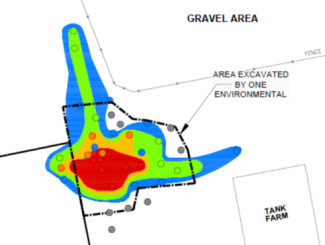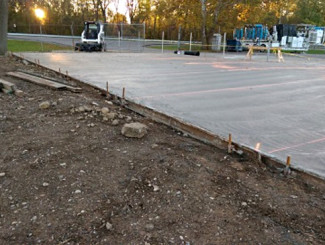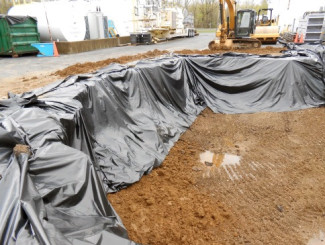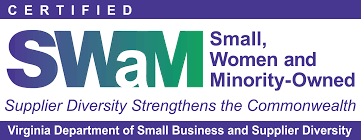PCB Remediation Project Transformer Yard – Ohio
BACKGROUND:
ONE has completed clean-up efforts for a transformer manufacturer required to remediate a site in accordance with the Toxic Substances and Control Act (TSCA) and under the auspices of Region V of the United States Environmental Protection Agency (USEPA). The property has been used for the production, remanufacturing, repair, and reconditioning of oil-filled transformers since the 1970’s. A localized area of polychlorinated biphenyl (PCB) contaminated soils resulting from historical operations was identified. TSCA mandates that any characterization, clean-up or disposal of PCB waste must be conducted in accordance with 40 CFR Part 761.61, and ONE provided an experienced team familiar with the requirements to lead the clean-up effort toward site closure.
REMEDIAL STRATEGY:
ONE developed a clean-up strategy in accordance with 40 CFR Part 761.61, and worked within the framework of the TSCA regulations and the USEPA on the scope of work. The clean-up strategy consisted of both risk-based and self-implementing programs. A self-implementing clean-up strategy was prescribed for the accessible portion of the soil source area in accordance with 40 CFR 761.61(a). Grid sampling was conducted and remedial activities which included soil excavation of the source area and concrete capping of residual areas along the fringes of the source area, deemed “low-occupancy”, were performed. Excavated soils were profiled as both hazardous and non-hazardous and required coordination of disposal at both Subtitle C and Subtitle D landfills.
Due to the proximity of active industrial buildings to the source area, a hybrid approach towards site closure was negotiated with the USEPA. This hybrid approach consisted of a risk-based evaluation of residual PCB-impacted soils in areas underneath a building where excavation was not technically practical. The risk-based evaluation was performed in accordance with 40 CFR 761.61(c), and both engineered and institutional controls were proposed as part of the final remedy. The institution controls were enforced through the Uniform Environmental Covenant Act (UECA).
SAMPLING AND DISPOSAL ACTIVITIES:
ONE performed all pre and post remedial sampling activities, which included grid sampling and confirmation sampling methods required under the self-implementing guidance and in accordance with TSCA regulations. Soil boring samples were collected continuously from zero to ten feet below grade utilizing direct push technology and field screened with a PCB field test kit. Discrete samples exhibiting the highest levels were submitted to the laboratory for analysis. This method was employed upon acceptance by the USEPA and resulted in significant savings for the client. The source area was delineated utilizing this method to determine the edge of hazardous soils for waste profiling purposes and to delineate the excavation limits to meet the low-occupancy levels for capped areas.




